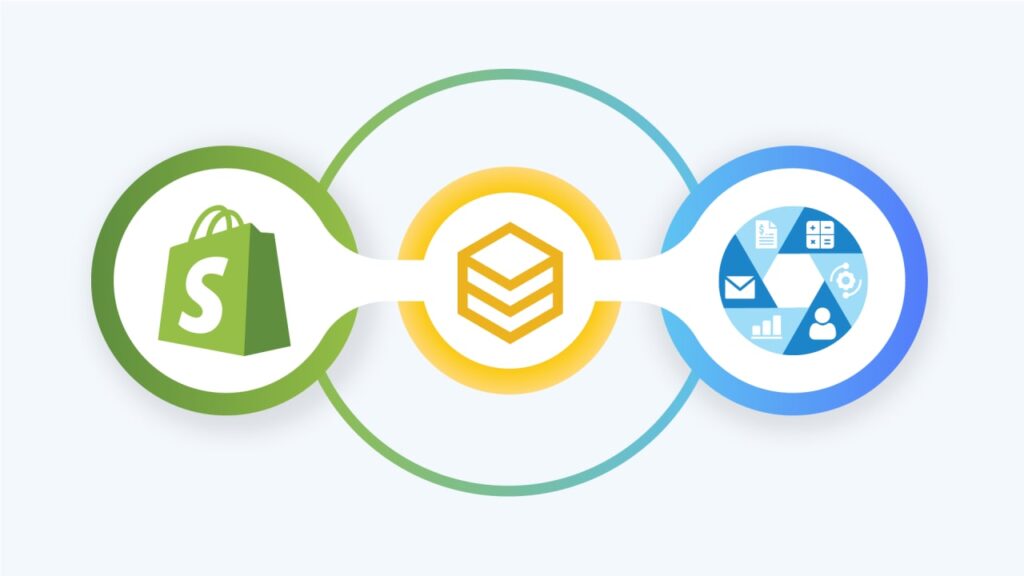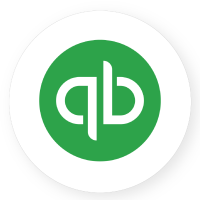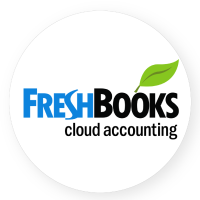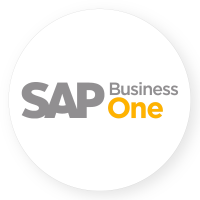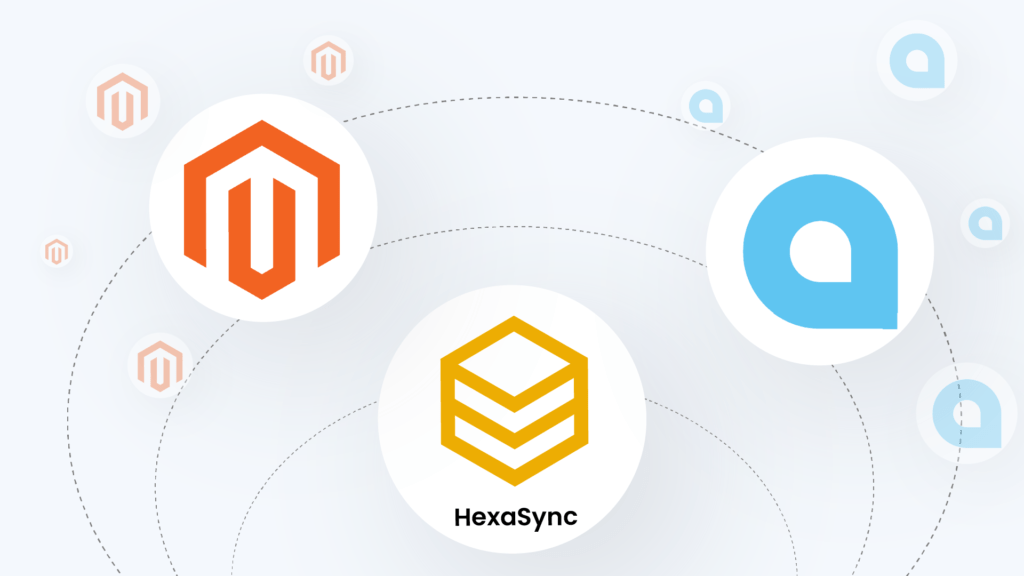Integration between CRM systems and eCommerce means that the company is well prepared to grasp what is going on in the minds of its customers and archive customer satisfaction faster.
Table of Contents
What is a CRM?
CRM System (or Customer Relationship Management Software) is a system category that contains programs that assist businesses to develop strong relationships with their customers, improve discussions, and increase revenue rates by analyzing customer data from numerous contact channels (phone calls, website visits, social interactions, and so on).

Types of CRM system
Operational CRM
Operational CRMs enable your marketing, sales, and customer service departments to better serve current and potential clients. The tool may be used for automation because it allows you to arrange information about your contacts and define regular routines.
Different departments can collaborate on capturing, nurturing, and closing deals for your organization in this manner. Leads from various marketing channels, for example, can be immediately uploaded to the CRM via tool integration. They can then be assigned to relevant stages of your sales cycle using tags, and the sales team can examine them further.
Analytical CRM
Unlike operational CRM, which collects data, analytical CRM is designed to analyze the data and draw key findings that may be used to produce reports and make better decisions. Data mining, pattern recognition, correlation, and other advanced techniques are used in this type of CRM.
Analytical CRMs assist businesses in making better use of the data they collect about their consumers. Customer preferences, channels, points of contact, interests, and other factors can all be considered.
Components for data mining can acquire even more information based on the contact data, such as trends, and help recognize patterns in data sets. Companies can use the data they already collect in this way to improve their operations.
Collaborative CRM
Collaborative CRM allows you to establish contacts across several customer service businesses. It can encompass marketing, sales, customer service, technical support, external customers, vendors, and distributors, among other firm divisions.
The main purpose of this CRM is to make workflows and processes easier to manage by utilizing organizational structures and hierarchies. When plans are passed from one department to another, it is not uncommon for there to be some tension or dissent.
Managers and supervisors would be able to engage and share concepts, ideas, workloads, and tasks with their superiors and employees equally using a completely collaborative CRM system.
Benefits of eCommerce CRM integration
Integrating with a customer relationship management system (CRM) can provide you with a detailed picture of your customers. Everything is in one place: a simple, customizable dashboard that tells you about a client’s previous interactions with you, the progress of their orders, any remaining customer support issues, and more. By laying a good CRM foundation, you’ll be able to:
- Efficiency and productivity are two terms that are often used interchangeably. Because of its data discovery capabilities and powerful integrations with your current software architecture, a well-implemented CRM is more than likely to straighten your operational inefficiencies.
- Data accessibility. Data is your most precious and strategic asset, and CRM is the greatest way to collect and evaluate that data in one location. The goal is to understand data rather than just view it, and CRMs facilitate this via a variety of in-house/integrated analytic tools.
- Improved Accountability. When your customer relationship isn’t going well, it’s a sign that none of the others are either. CRMs come in handy in this situation since they streamline client interactions and make your company more trustworthy and accountable. They assist employees in understanding their responsibilities, but most importantly, their errors.
- Improved collaboration. We all know that spreadsheets aren’t very useful. Still, we’re falling short on several key features that we should be able to give since we don’t have the necessary tools. CRMs, on the other hand, are cloud-based, which ensures that customer information is available to everyone at all times.
- Customer communication is more efficient. Don’t just think about what a CRM is meant to perform for you while putting one in place. Put yourself in your customer’s shoes and discover if the tool can detect their wants and, as a result, increase sales. CRMs are one of the few systems that have been proven to increase customer retention, owing to the fact that they track the company’s relationship with each individual client.
- Enhanced Security. Using a leading cloud-based CRM will provide you with additional layers of data security. The most advanced programs also have the most advanced security features.

What to consider before choosing a CRM system?
It’s critical to get the correct product. You don’t want to waste time on something that isn’t up to par or doesn’t fit into your workflow. There are, however, other aspects to consider. It’s also more of an art than a science to doing it right.
When selecting a CRM product, however, the bottom line must be taken into account. First and foremost, consider whether the price is within your budget. Second, see if you can get a return on your investment. Also, consider how you’ll track your progress. This is where the science of software adoption comes in.
Who will make use of your CRM software? Will you primarily use your CRM tools for marketing? Is it done by a sales team? Both? Consider everyone in your business who could benefit from customer insights (whether it’s just for visibility or to use data for a specific purpose) while looking for a product that will meet your needs.
What level of sophistication do you require to get started? Keep in mind that developing a comprehensive CRM strategy is unlikely to happen overnight. Find a tool that allows you to take a more simplistic approach so you can fine-tune your technique and progressively add complexity as you learn.
Which marketing channels are you employing to communicate with your target audience? Find a solution that interacts directly with the channels you use the most, so information can be rapidly put into action and insights aren’t isolated or lost.

Will your CRM be able to grow with you? You’ll discover new ways to use your audience reports and automate CRM operations over time, so it’s critical to select a product that lets you add this capability as you need it. However, keep in mind that you don’t want to be paying for (and working around) needless complexity if there are CRM processes you’ll never use.
CRM system is suitable with
CRM isn’t just for organizations or corporate businesses. For organizations of all sizes and specializations, using data to better client connections has become a necessary function. In fact, there’s no better moment to start managing your contacts than when you’re just getting started.
You begin obtaining vital information about your clients and potential consumers the instant you develop an internet presence for your business. CRM can assist you in establishing a solid basis for building and managing connections with those customers, as well as collecting data about their preferences and setting up marketing automation procedures for consistent, tailored touchpoints over time.

CRM does not have to be a full-time occupation: Putting your data to work for you can help you stay on clients’ radar, identify new sales possibilities, and save time, whether you have a small sales force or are a solo entrepreneur relying on sporadic marketing efforts to sell your business. It also enables you to make data-driven decisions about where to spend your money to reach clients through whichever channel they choose, ensuring that they think of you whenever they’re ready to buy.
How to integrate eCommerce with CRM systems?
CRM integration can take place in a variety of ways:
- Companies can invest entirely in one provider’s products and services, ensuring that all applications and tools seamlessly interact and exchange data.
- Developers can compel two systems to communicate with a few lines of code. However, this approach frequently leads to a jumbled web of code that fails with changes and new integrations.
- APIs, which are reusable and may be used for a number of reasons, can be used by businesses.
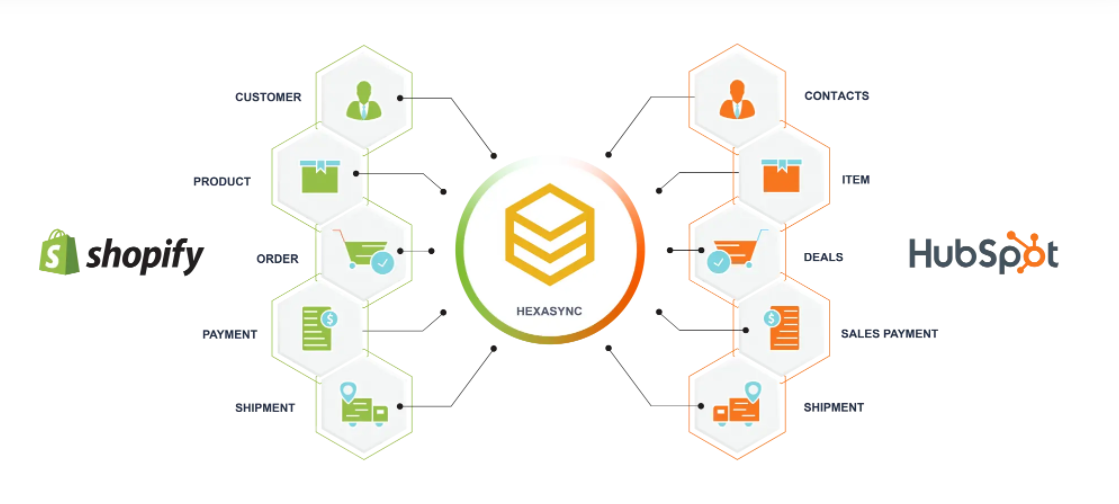
The first option is unlikely, especially given the number of applications used by the average organization. The second approach is frequently used by businesses, although it causes IT staff and users issues. The third option is the simplest, quickest, and most advantageous.
How can CRM integration challenges be addressed easier? Finding a single, integrated supplier that does it all from the start is the simplest way to address the most prevalent CRM integration issues.
Beehexa connects to popular CRMs like HubSpot, Salesforce, MS Dynamics, and other systems that you can name. You get all the advantages of using a sales intelligence platform without the hassle of switching between systems or web browsers. Take control of everything by a single-core hub. Beehexa does it all, automatically, so you can focus on what really matters to your business.
Final Words
Customer relationship management tools assist you to gain a better understanding of your customers, increasing customer happiness, and increasing sales. As you reach out to each lead and customer, you’ll provide a personal touch, which is the quickest way to happier customers.
CRM integration has a wide range of advantages for business success. By consolidating all data and operations into a single location and platform, integrated CRMs can boost organizational productivity and efficiency.




